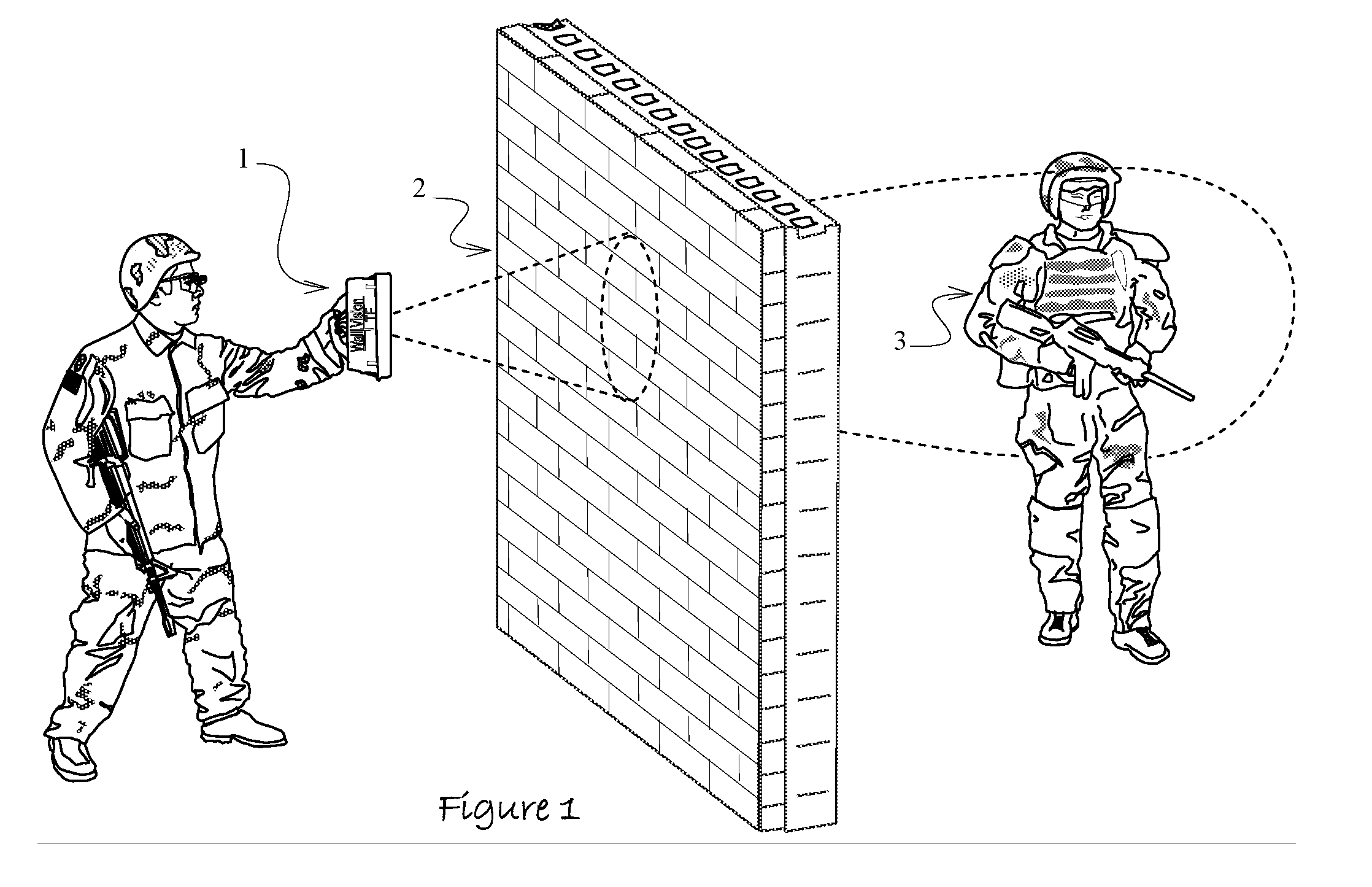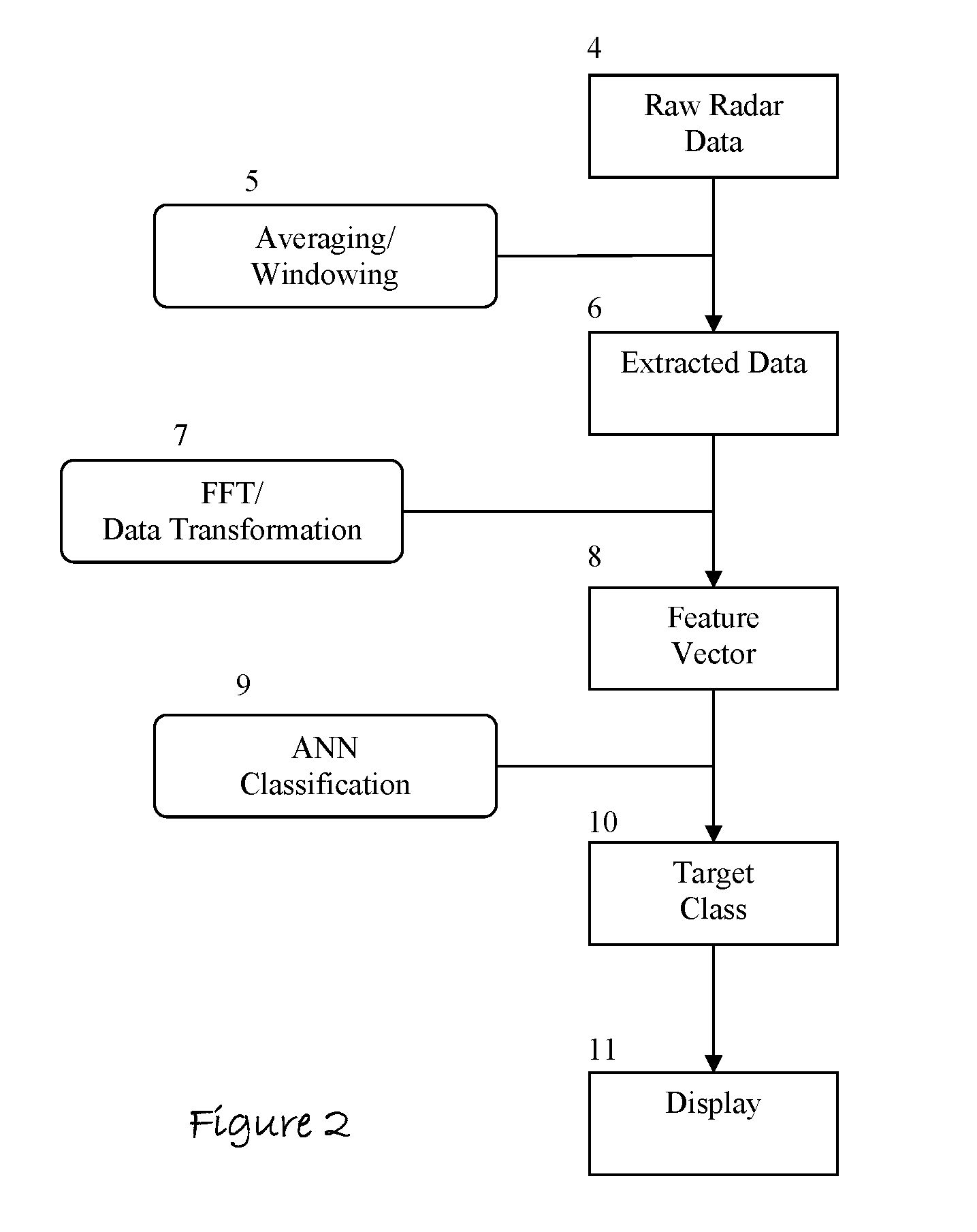Apparatus and Method to Identify Targets Through Opaque Barriers
a target identification and opaque barrier technology, applied in the field of apparatus and methods to identify targets through opaque barriers, can solve problems such as increasing likelihood, and achieve the effects of preventing the ability to identify targets, improving prior art, and improving the performance of automatic target recognition
- Summary
- Abstract
- Description
- Claims
- Application Information
AI Technical Summary
Benefits of technology
Problems solved by technology
Method used
Image
Examples
Embodiment Construction
[0055]Essential Steps of the Prefered Method
[0056]Preferred embodiments of this invention are illustrated in FIG. 1 and in FIGS. 3 through 7. The preferred method of operation comprises iteratively of collecting ultra wideband radar data by aiming an assembled embodiment of this invention 1 toward a wall 2 or other opaque barrier and by horizontally and vertically swaying the unit to search for objects of interest 3 that are concealed in or by the occlusion 2. The raw radar data 4 is subsequently provided to a signal processor where signal noise reduction techniques like signal averaging 5 are applied to the same. A windowing function 5 incrementally moves over the processed radar return signal to group the entire processed signal into individual elements 6 that can be closely examined for objects of interest. As the windowing function progresses through the processed signal, its position is dynamically centered over time domain amplitude magnitude peaks in the reflected return.
[005...
PUM
 Login to View More
Login to View More Abstract
Description
Claims
Application Information
 Login to View More
Login to View More - R&D
- Intellectual Property
- Life Sciences
- Materials
- Tech Scout
- Unparalleled Data Quality
- Higher Quality Content
- 60% Fewer Hallucinations
Browse by: Latest US Patents, China's latest patents, Technical Efficacy Thesaurus, Application Domain, Technology Topic, Popular Technical Reports.
© 2025 PatSnap. All rights reserved.Legal|Privacy policy|Modern Slavery Act Transparency Statement|Sitemap|About US| Contact US: help@patsnap.com



